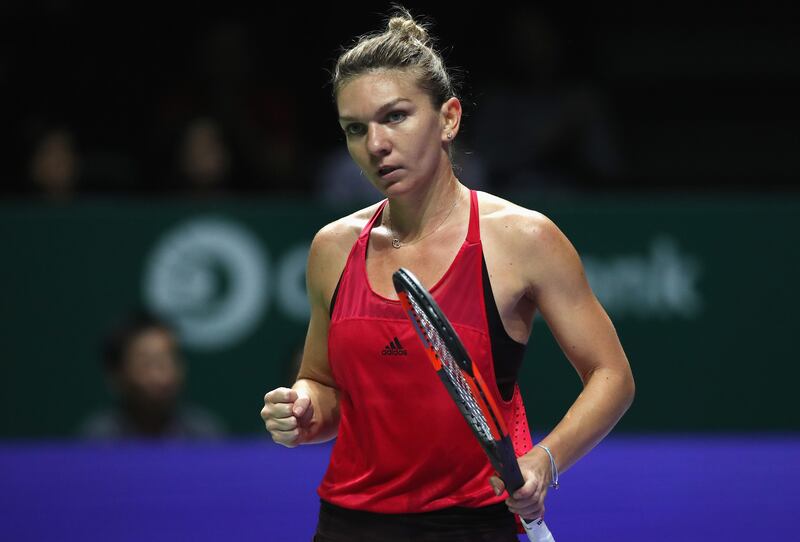We are often told of the importance of a winning mentality in elite-level sport. The ability to win at all costs, or at least never give up in its pursuit, is what separates the greats from the rest.
In an individual sport such as tennis, this comes into sharper focus. How a player handles the pressure moments can offer plenty of insight into their mindset.
When talent is combined with this unshakable mentality, it gives rise to great champions. There is no doubt Serena Williams is among the most naturally gifted women to ever pick up a tennis racket. But she stands alone as her sport’s greatest champion because she wraps that talent around a mentality that refuses to accept losing even against seemingly insurmountable odds.
__________________________________
Read more:
Mubadala World Tennis Championship: Djokovic and Wawrinka to join Nadal in Abu Dhabi
WTA Finals: Simona Halep thrilled to win first match as world No 1 in Singapore
WTA Finals: Pliskova uses knowledge of Singapore to her advantage to down Williams
__________________________________
On numerous occasions over the years, Williams has been on the ropes only to find it within herself to win. For the best example, travel back to the 2003 Australian Open semi-final. Williams trails Kim Clijsters 1-5 in the deciding set, fends off two match points and fights back to win 7-5. The American then goes on to win the fifth of her record 23 major titles and complete the career grand slam against sister Venus in the final.
This same steely mindset can be applied to any number of top-ranked tennis players over the years. Rafael Nadal, Roger Federer, and Novak Djokovic – the three greatest male players of the modern era – all possess such mental toughness.
It therefore makes the rise of the current women’s world No 1 all the more fascinating.
ICYMI: @Simona_Halep started life as World No.1 with a 6-4, 6-2 victory over Garcia! #WTAFinals pic.twitter.com/g6TcyfS0EX
— wta (@WTA) October 23, 2017
Simona Halep last month reached the WTA Tour’s summit for the first time in her career. Talent has never been an issue for the 26-year-old Romanian, but her ability to deliver in the biggest pressure moments has seen her fall short of what her talent arguably deserves.
Even this year, during a season that saw her become the 25th woman to top the WTA rankings, Halep’s vulnerability under pressure has proven costly.
Of the 17 tournaments Halep has played this season, she has reached the latter stages - semi-finals or better - seven times. A decent return, but having reached four finals, Halep has converted just one into a title. A poor conversion rate for a world No 1 and proof that pressure has once again played a big part in her near-misses.
This was none more evident than in the French Open final. Halep was leading by a set and 3-0 against a 19-year-old Jelena Ostapenko featuring in her first grand slam final. Halep went on to lose 4-6, 6-4, 6-3.
"It's my first tournament as World No.1 and I'm really happy I could win the first match" -@Simona_Halep #WTAFinals pic.twitter.com/Ol8x1rwtN0
— wta (@WTA) October 23, 2017
Granted, Ostapenko produced some rampaging tennis to claw her way to victory but a player of Halep’s ability should not be blowing those sorts of leads against a grand slam final novice.
To reach the heights Halep has reached, even prior to her rise to No 1, requires mental fortitude, but an absence of ruthlessness – such as the kind displayed by Ostapenko at Roland Garros or Williams throughout her career – has hamstrung Halep too many times.
Indeed, Halep’s mental fragility and attitude let her down to such an extent that following her defeat to Johanna Konta at the Miami Open in March, coach Darren Cahill temporarily split with her and refused to reunite until she improved the mental aspect of her game.
The “shock” of losing Cahill, as Halep described it, seemed to light a fire under her and over the next six months and 12 tournaments en route to becoming No 1, Halep won her first title of the season, in Madrid, and reached a further four finals.
Relive the women's final of #RG17 and the incredible performance of Jelena Ostapenko. Revivez la finale dames et la victoire d'Ostapenko 🏆🔥 pic.twitter.com/PhLqp8uxUh
— Roland-Garros (@rolandgarros) June 17, 2017
It was that level of consistency, combined with a relatively level playing field at the top of the women’s game in Williams’ absence, that led to Halep’s rise to No 1.
The WTA Tour is arguably the most competitive it has ever been. Four different women – Angelique Kerber, Karolina Pliskova, Garbine Muguruza, and Halep – have held the top ranking in 2017, while all eight players competing at the WTA Tour Finals in Singapore can end the year as world No 1.
Additionally, Williams is set to return in 2018 having missed most of this season to become a mother, and five-time grand slam champion Maria Sharapova continues to make her way back up the rankings following her return from a 15-month doping suspension.
Halep will remain No 1 until the start of next season if she wins the title in Singapore. She started well with an impressive victory over in-form Caroline Garcia, and faces Caroline Wozniacki today.
Early tournament form is never a problem for Halep, but whether she can deliver when the pressure cranks up in the latter stages will determine her credibility as a world No 1, an it is up to her to thrive under that pressure.
After all, it is under these circumstances where great champions are made.





